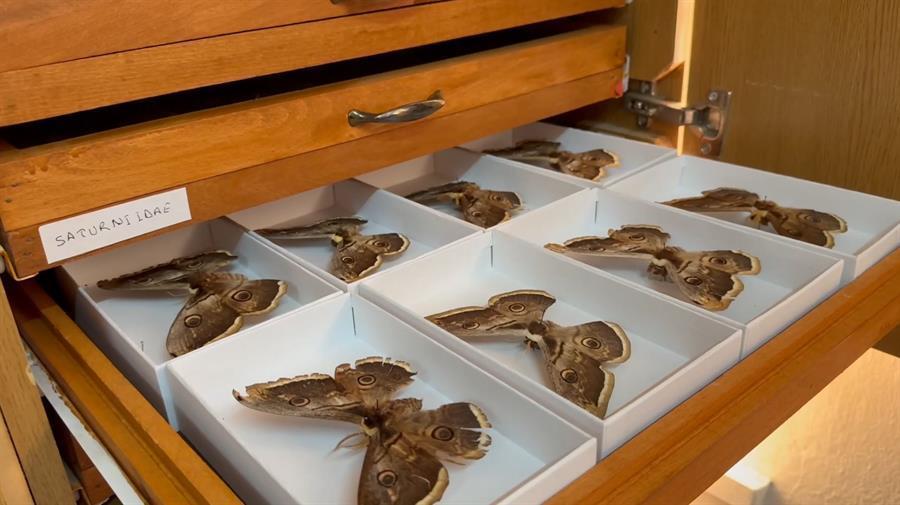Insect Museum preserves thousands of species
ANKARA

The Insect Museum, where plant-friendly and -unfriendly insect species are examined and kept, is home to more than 70,000 samples of approximately 3,000 species, which have been collected since the 1930s.
The museum is operated within the body of the Agriculture Ministry General Directorate of Agricultural Research and Policies (TAGEM).
During the study in the museum, two of the three earth fleas identified in the last eight years were introduced to the scientific world as new species and one as a subspecies.
According to the Ministry, identifying harmful and beneficial species in agricultural production, determining their regional distribution, creating reference collections and ensuring their preservation are important for plant health.
While some organisms cause serious economic losses of up to 100 percent in plant products, others are plant-friendly and prevent loss of efficiency in production. Knowing exactly what kind of pest it is is of critical importance in determining the control method to be chosen and therefore minimizing economic loss.
Conducting studies on these organisms and creating reference collections play a major role in preventing yield loss in plant production. Identification of species is the first step in agricultural control. By identifying the type of insects, the appropriate method can be used in agricultural control at the appropriate time.
In addition, correct identification of beneficial insect species enables the use of correct agents in biological control and pollination studies. Insect samples approved by experts in the field become reference materials that serve as a guide for researchers. In this respect, museums constitute one of the main sources of data mining in terms of biodiversity.
Nazife Tuatay Plant Protection Museum, named after Nazife Tuatay, a scientist who made great contributions to the development of entomology in Türkiye, is one of the oldest and most well-established entomology (insect science) museums in Türkiye. In the internationally respected museum, studies are carried out to detect diseases, weeds and pests in cultivated plants and to determine their distribution and density.
As the museum is unique in its field, an important collection has been created thanks to the preservation of samples that have been identified by experts and researchers in Türkiye and abroad. More than 70,000 specimens belonging to approximately 3,000 species, which have been collected since the 1930s, are preserved in the museum. Among these samples, 555 types of 53 species, which were introduced to the scientific world for the first time, were compiled in a book by the Agriculture Ministry in 2015.
The book also included 333 species identified by researchers at the museum until 2015, considered a new record for Türkiye. Additionally, new species have been identified and included in the museum since 2015.
In this context, two of the three earthworms from the Chrysomelidae (leaf beetles) family of the Coleoptera (beetle) order were introduced to the scientific world as new species and one as subspecies.
One new species from the Pentatomidae (stink bugs) belonging to the order Hemiptera (halfwings) and two new species from the Miridae family, which are currently in the process of being published, have joined the museum's specimens. Additionally, two species from the Chrysomelidae family and one species from the Lygaeidae family were identified as new species for Türkiye.
In addition to these studies, the distribution of species is constantly updated as known species are detected in different places in the country.
Information about each insect specimen in the museum is saved in the database. When these studies are completed, a catalog of the museum will be ready for publication. This data will also be shared on the internet.
















